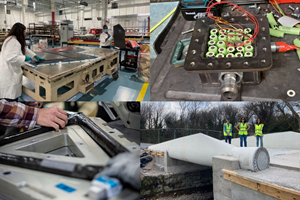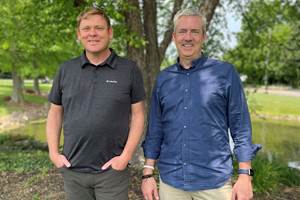There are no bad ideas
Whenever we, as an editorial staff, sit down to begin planning editorial features and other articles for the coming year, we get our ideas from a variety of sources.
Whenever we, as an editorial staff, sit down to begin planning editorial features and other articles for the coming year, we get our ideas from a variety of sources. Some are pitched to us by processors or suppliers and some are conjured up by members of the editorial staff. Many ideas, even in the planning stage, are fairly well-formed and focused. Some are clearly structured around a specific case history — these often become our “Inside Manufacturing” articles. Others center around part design and material selection, thus making them good candidates for our “Focus on Design.” Throughout the year, we also do what we call technology “roundups.” These might focus on a material type (fiber or resin), a manufacturing process, curing methods or any of a large number of types of manufacturing equipment. Technology stories are often selected and assigned because they represent a segment that HPC has not covered for some time and has shown some signs of evolving. For example, a few years ago, we did several articles on fiber forms, during the time when nonwoven reinforcements were beginning to supplant woven fabrics in a number of applications because they offer a method of construction that does not crimp the fiber.
Such stories can easily take on a life of their own, evolving quickly from a technology update to a multipart, multidimensional, full-grown exploration of the many ins and outs of the technology, process or material. This month’s issue gave birth to one such behemoth, which reviews current offerings in the automated fiber placement (AFP) and automated tape placement (ATL) world.
This story seemed like a simple one when we scheduled it. The increasing and heavy use of ATL and AFP in the manufacture of major structures for commercial aircraft like the Boeing 787 Dreamliner and the Airbus A350 XWB — particularly the fuselages — almost demanded an assessment of this dynamic segment of the machinery market, where fast-changing hardware and software capabilities are making once difficult and prohibitively expensive composite structures feasible and practical.
However, when I began making calls and talking to folks heavily involved with ATL/AFP, I quickly discovered that there was greater change, more hardware and software variation than I had expected and a wide range of opinions about what the next 5 to 10 years will hold for these similar but decidedly different manufacturing methods. The resulting narrative emerged at 5,000-plus words and, although thorough, proved to be much too long given our physical space limitations in this issue.
Rather than pare the article down to the bone and risk losing valuable information, we opted to publish it in two parts. Part I appears in this issue (see "Editor's Picks") and is the technology “roundup” I had intended to write. It looks at who’s making what kinds of ATL/AFP equipment for what kinds of applications. Part II will appear in the September issue of HPC. There, we’ll examine, through the eyes of several ATL/AFP experts, the development and applications trajectories these fast evolving machines might take as they mature. Although opinions differ and, therefore, those of you who are considering capital purchases in this area may not find definitive answers to your ATL/AFP questions, the discussion will nevertheless be illuminating, and should help you determine what questions to ask of machine vendors.
Related Content
As 2023 begins, a look back at trending CW topics in 2022
With 2022 now behind us, CW’s editor-in-chief Jeff Sloan takes a look at the CW stories last year that received the most reader attention.
Read MoreThe return of trade show season
SAMPE Seattle, JEC World and the Paris Air Show are approaching fast, and they signal the real emergence of a post-pandemic world.
Read MoreUp, not out: The next chapter of CompositesWorld
I have been editor-in-chief of CompositesWorld for 17 years, which translates into a lot of editorials. This will be my last as I become publisher of CW. We welcome Scott Francis back to the brand to take my place.
Read MoreWelcome to the Composites Age
The human race has a long history of developing materials, each one a little better than the one before it. Composites are among the latest in a long line, and proving highly adaptable to new opportunities.
Read MoreRead Next
From the CW Archives: The tale of the thermoplastic cryotank
In 2006, guest columnist Bob Hartunian related the story of his efforts two decades prior, while at McDonnell Douglas, to develop a thermoplastic composite crytank for hydrogen storage. He learned a lot of lessons.
Read MoreCW’s 2024 Top Shops survey offers new approach to benchmarking
Respondents that complete the survey by April 30, 2024, have the chance to be recognized as an honoree.
Read More

















.jpg;maxWidth=300;quality=90)






